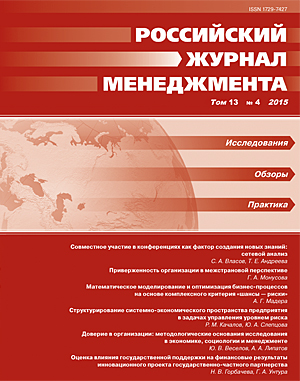Conferences Co-Participation As a Factor of New Knowledge Creation: Network Analysis
Abstract
Scientific and professional conferences represent unique opportunities to search for new knowledge. Participants from leading universities, high-tech firms and other organizations from all over the world come together to discuss topical issues and exchange latest findings. Despite this, knowledge potential of the conferences is still understudied. This article attempts to address this gap. Based on sample of 470 small firms from electronic industry we analyzed how position in conferences co-participation network relates to new knowledge creation of participating firms. Our findings suggest that some positions in such networks are more beneficial for knowledge creation, while the others are less beneficial for that.
Keywords:
conferences, network analysis, knowledge networks, knowledge creation
Downloads
References
Translation of references in Russian into English
Downloads
Published
How to Cite
Issue
Section
License
Articles of the Russian Management Journal are open access distributed under the terms of the License Agreement with Saint Petersburg State University, which permits to the authors unrestricted distribution and self-archiving free of charge.





